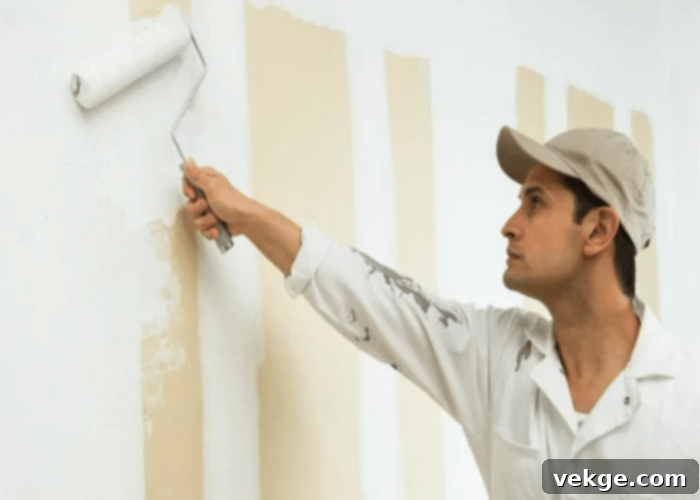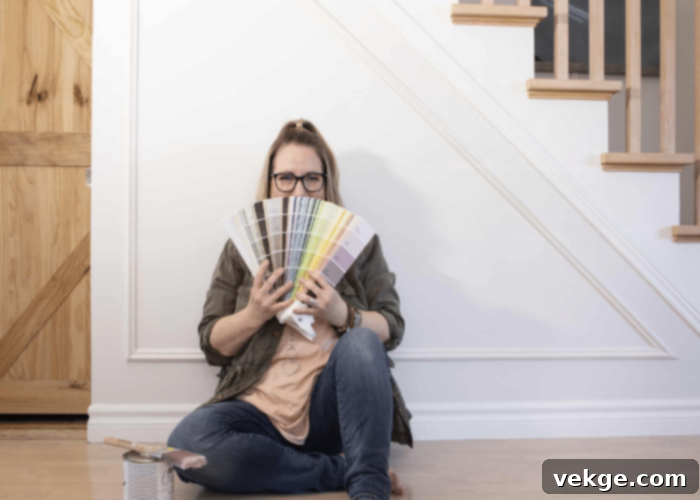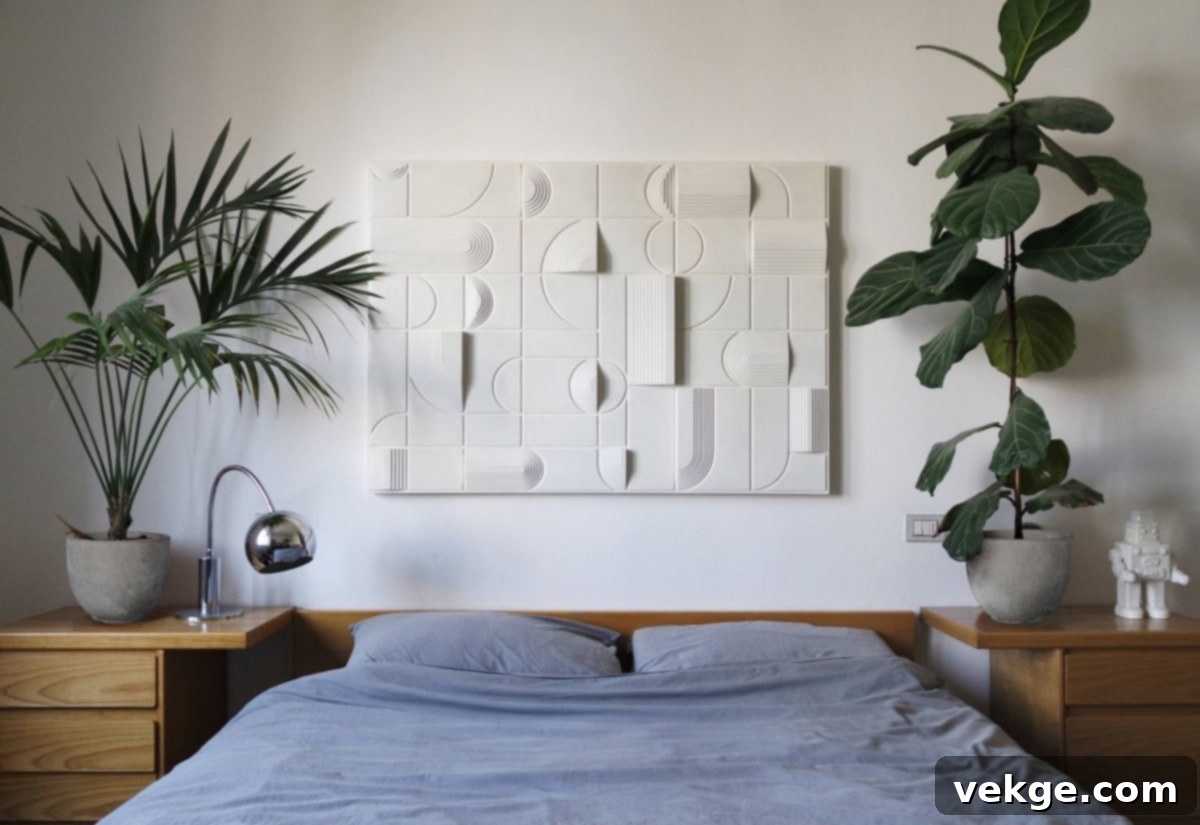The Ultimate Guide to Maintaining Neutral Painted Walls: Keep Your Home Looking Flawless
Painting a home or office space is a significant investment, transforming interiors with a fresh coat of color and setting the aesthetic tone for every room. Whether it’s an inviting bedroom, a bustling kitchen, or a professional office, the chosen paint colors contribute immensely to the overall ambiance. While vibrant hues certainly make a statement, the timeless appeal of neutral colors for bedrooms, living rooms, and other areas offers unmatched versatility. These subtle shades – think soft grays, warm beiges, crisp whites, or even sophisticated blacks – act as a blank canvas, allowing you to easily introduce accents and personalize your decor.
However, the beauty of these neutral backdrops comes with a specific demand: diligent maintenance. While all painted walls benefit from regular care, neutral tones often highlight dirt, smudges, and imperfections more readily than darker or bolder colors. Therefore, preserving the pristine condition of your neutral painted walls is not just about aesthetics; it’s about protecting your investment and ensuring your space remains inviting and elegant over time.
In this comprehensive guide, we will delve deep into the art of caring for and maintaining neutral-painted walls. We’ll explore why consistent maintenance is crucial, discuss different paint types and their implications for care, and provide actionable tips and step-by-step methods for tackling everything from routine dusting to stubborn stains. Let’s get started on keeping your neutral walls looking as good as new!
Why Do Painted Walls Need Consistent Maintenance?

The need for painted wall maintenance extends beyond just neutral colors; every painted surface in your home or office benefits from regular care. However, neutral walls often make dirt and marks more apparent, making their maintenance particularly vital. Here are the primary reasons why consistent wall maintenance is indispensable:
- Protecting Your Investment: Painting projects represent a significant financial outlay and often require professional expertise. Given that walls typically need repainting every few years, proper maintenance helps extend the life of your current paint job, delaying the next costly and time-consuming repainting task. Keeping your walls in excellent condition maximizes the value of your initial investment.
- Preserving Aesthetic Appeal: Walls are the largest unbroken surfaces in any room, profoundly influencing its overall look and feel. Clean, well-maintained walls contribute to a fresh, inviting, and well-cared-for atmosphere. Conversely, dirty, scuffed, or stained walls can make an entire room appear neglected, regardless of how well decorated it might be. This is especially true for neutral tones, which are chosen for their clean, sophisticated, and serene qualities.
- Promoting Hygiene and Air Quality: Walls, like any other surface, can accumulate dust, allergens, and even mold spores over time. Regular cleaning helps remove these particles, contributing to better indoor air quality and a healthier living or working environment. This is particularly important for individuals with allergies or respiratory sensitivities.
- Preventing Permanent Damage: Minor scuffs, smudges, and spills, if left unaddressed, can become more challenging to remove over time, potentially leading to permanent stains or even damage to the paint surface. Timely intervention with appropriate cleaning techniques can prevent these issues from escalating.
- Enhancing Property Value: If you’re considering selling your property, well-maintained walls are a huge asset. They present a positive first impression to potential buyers, signaling that the home has been cared for and is move-in ready, potentially increasing its market value.
How to Care for and Maintain Neutral Color Painted Walls?

Even with the most meticulous efforts, walls are prone to accumulating unpleasant spots, scuff marks, handprints, or even crayon scribbles, especially in busy households. This is particularly noticeable on neutral-painted walls, which require dedicated care to maintain their inherent elegance and cleanliness. To effectively care for these surfaces, it’s essential to understand both the primary neutral colors and the different types of paint finishes, as these factors significantly influence cleaning and maintenance strategies.
Understanding Paint Finishes and Neutral Color Shades
Before diving into maintenance tips, let’s explore the foundational elements that affect how easily your walls can be cleaned and maintained:
Common Types of Paint Finishes:
- Matte Finish: This finish offers a smooth, non-reflective appearance that is excellent at hiding imperfections. However, it is the least durable and most porous finish, making it very difficult to clean without damaging the paint. Stains tend to soak in, and scrubbing can leave shiny spots or remove paint. Best for low-traffic areas like formal dining rooms or ceilings.
- Eggshell Finish: Offering a slight sheen reminiscent of an eggshell, this finish is more durable and slightly more washable than matte. It’s a popular choice for its subtle luster and ability to withstand light cleaning. It’s a good compromise for moderate-traffic areas like living rooms and bedrooms.
- Satin Finish: With a velvety, pearl-like sheen, satin is more durable and easier to clean than eggshell. It’s often recommended for medium- to high-traffic areas and rooms prone to moisture, such as kitchens, bathrooms, and hallways, due to its increased resistance to humidity and scuffs.
- Semi-Gloss Finish: This finish provides a noticeable shine, making it very durable and highly washable. Its smooth, hard surface resists moisture and can be scrubbed clean without much effort, making it ideal for high-traffic areas, trim, doors, and areas requiring frequent cleaning. While it highlights imperfections more than matte, its practicality often outweighs this drawback for functional spaces.
- Gloss Finish: The most durable and reflective of all finishes, gloss paint offers a mirror-like shine. It is exceptionally easy to clean and highly resistant to moisture and stains. Typically reserved for trim, doors, and cabinetry, or areas that need to withstand extreme wear and tear, as its high reflectivity will highlight every surface imperfection.
Primary Neutral Colors:
- White: Crisp, clean, and endlessly versatile. White can make spaces feel larger and brighter, but it shows dirt and scuffs very easily.
- Black: Dramatic and sophisticated, black can add depth and elegance. While it can conceal some minor smudges, dust and lighter marks are often quite visible.
- Gray: Ranging from cool to warm tones, gray offers a modern and sophisticated backdrop. Lighter grays share cleaning challenges similar to white, while darker grays might hide some dirt but show dust.
- Beige/Cream: Warm, inviting, and classic, these tones create a cozy atmosphere. They tend to be more forgiving than pure white but still require regular attention to maintain their fresh appearance.
- Brown: Earthy and grounding, brown hues can create a rich, comforting environment. Darker browns can be quite forgiving with some types of dirt but can show dust accumulation.
Regardless of whether you use these neutral colors for a serene bedroom, a vibrant kitchen, a welcoming drawing-room, or a professional office, their natural, earthy, and sustainable hues significantly impact the space’s character. Maintaining that fresh, clean appeal on the wall for as long as possible is a critical, though sometimes challenging, task. Below are essential tips and techniques to help you effectively care for your neutral walls.
Essential Tips to Maintain Neutral Painted Walls

Proactive care and a consistent cleaning routine are your best defense against wear and tear on neutral painted walls. Here are some invaluable tips to keep your walls looking pristine:
- Choose the Right Paint Finish: When selecting paint for your space, especially for high-traffic areas or homes with children and pets, prioritize durability and washability. Opt for a semi-gloss or satin finish over matte or eggshell. These finishes create a harder, smoother surface that resists stains and allows for easier wiping and cleaning without damaging the paint. While a matte finish offers a sophisticated look, its porous nature makes it notoriously difficult to clean.
- Keep Leftover Paint for Touch-ups: Always ask your paint expert or vendor for at least one sample can of the exact paint used, or purchase an extra can yourself. Store it properly (tightly sealed, away from extreme temperatures). This will be incredibly useful for future wall touch-ups, allowing you to seamlessly cover small scuffs, chips, or stubborn marks that cleaning alone cannot remove. Ensure you label the can clearly with the room and date of application.
- Increase Frequency of Dry Dusting: Walls and baseboards are often neglected during routine cleaning, yet they accumulate a surprising amount of dust, cobwebs, and airborne particles, which are highly visible on neutral surfaces. Incorporate dry dusting your walls into your regular cleaning schedule, ideally once every week or two. Use a soft wall cleaner mop with a microfiber or electrostatic pad, a long-handled duster, or even a vacuum cleaner with a brush attachment to gently remove dust from top to bottom.
- Perform Occasional Deep Wet Cleaning: While dry dusting handles surface dust, occasional wet cleaning is necessary to tackle accumulated grime, light stains, and eliminate odors that can cling to walls over time. Depending on foot traffic and exposure to elements (like in kitchens or bathrooms), plan for a deep wet clean every few months or as needed. Always use a gentle, mild cleaner and warm water, and ensure you wring out your sponge or cloth thoroughly to avoid over-saturating the walls.
- Act Quickly on Stains: The sooner you address a stain, the easier it will be to remove. Fresh spills are less likely to set into the paint. Have a go-to cleaning solution ready for quick response to spills or marks.
- Protect High-Traffic Areas: Consider adding protective measures in areas prone to scuffs and marks. For instance, clear corner guards can prevent damage in busy hallways, and strategically placed rugs or runners can reduce the amount of dirt tracked onto lower wall sections.
- Ventilate Rooms: Proper ventilation, especially in kitchens and bathrooms, can prevent the buildup of grease, steam, and moisture, which can lead to unsightly stains and potential mold growth on your neutral walls. Use exhaust fans and open windows regularly.
Wiping Out Stains from Walls: A Detailed Guide
Even with proactive measures, stains are sometimes inevitable. Here’s how to effectively remove common types of marks from your neutral painted walls:
1. General Dirt and Grime (Normal Stains)
Required material: Wall duster or vacuum with brush attachment, bucket, multipurpose cleaner (pH-neutral), two microfiber sponges or soft cloths, warm water.
Method:
- Dust Thoroughly: Begin by using a wall duster or vacuum to remove all loose dust and cobwebs from the walls. This prevents dust from turning into muddy streaks when wet.
- Prepare Cleaning Solution: Fill one bucket with warm water and add a small amount of pH-neutral, multipurpose cleaner according to product instructions. Fill a second bucket with clean, warm water for rinsing.
- Test in an Inconspicuous Area: Before cleaning, always test your chosen cleaner and method on a small, hidden section of the wall (e.g., behind furniture or near a baseboard) to ensure it doesn’t discolor or damage the paint.
- Gentle Scrubbing: Dip a microfiber sponge into the cleaning solution, wring it out thoroughly so it’s damp, not dripping. Gently scrub the wall in small sections, working from bottom to top to avoid streaking. For areas with higher traffic or visible dirt, apply slightly more pressure.
- Rinse Effectively: Immediately after cleaning a section, dip your second clean sponge or cloth into the clean water bucket, wring it out, and wipe down the cleaned area to remove any soap residue. Rinsing is crucial to prevent streaks and sticky residue that can attract more dirt.
- Dry the Surface: While walls should air dry quickly, you can gently pat dry with a clean, dry microfiber cloth, especially if the room is humid or the paint finish is delicate.
This method is excellent for maintaining the neutral-colored areas of the house that encounter more traffic, keeping them looking fresh and clean.
2. Pen/Pencil/Crayon/Color Stains
Required material: Non-gel white toothpaste (not colored or abrasive), old soft-bristled toothbrush, white cloth, damp clean cloth.
Method:
- Apply Toothpaste: Squeeze a small amount of non-gel white toothpaste directly onto the stain. The mild abrasive quality of toothpaste (calcium carbonate) helps lift the pigment.
- Gently Rub: Using a soft-bristled toothbrush, gently rub the toothpaste into the stain in small, circular motions. Be careful not to scrub too hard, especially on less durable paint finishes, as this can damage the paint.
- Wipe Away Residue: After rubbing for a short time, use a clean, dry white cloth to wipe away the toothpaste and the lifted stain. Do not use colored cloths, as there’s a risk of color transfer to your neutral wall.
- Rinse if Necessary: If any toothpaste residue remains, lightly dampen a separate clean cloth with plain water and gently wipe the area.
- Repeat if Needed: For stubborn marks, you may need to repeat the process a few times. This easy, home-based method is surprisingly effective for removing many types of art-related stains with minimal effort.
3. Oil Stains and Greasy Marks
Required material: White chalk, microfiber cloth (dry), microfiber cloth (damp with mild soap solution).
Method:
- Apply Chalk: For oil or greasy stains, generously rub white chalk directly onto the stain. Ensure the stain is completely covered with a thick layer of chalk dust. The porous chalk acts as an absorbent.
- Let It Absorb: Allow the chalk to sit on the stain for several minutes (10-15 minutes is usually sufficient). During this time, the chalk dust will work to absorb the oil from the painted surface.
- Wipe Off Chalk: Using a dry microfiber cloth, thoroughly wipe off the chalk dust. You should see the oil stain diminishing as the chalk carries it away.
- Final Clean-up: If a faint residue remains, lightly clean the area with a damp microfiber cloth moistened with a very mild solution of dish soap and water. Rinse with a clean, damp cloth and dry thoroughly. This is an ultimate and super easy way to make greasy marks disappear from neutral-painted walls.
Beyond these specific stain removal techniques, remember to always test any new cleaning agent or method in an inconspicuous area first. Avoid harsh chemicals, abrasive scrubbers, or excessive water, which can damage your paint. By incorporating these considerable and cost-effective maintenance tricks into your routine cleaning habits, you can achieve a “new-like” appearance for your neutral-painted walls, preserving their beauty and the fresh feel of your home.
Conclusion
Neutral paints, far from being monotonous or dull, are celebrated by interior design experts as a limitless creative element for any space. Their ability to provide a serene backdrop, enhance natural light, and serve as a versatile foundation for any decor style makes them a perennially popular choice for homes and offices alike. Whether applied to the innermost sanctuary of a bedroom or the bustling activity of a living room, neutral colors exude a timeless elegance.
However, to truly harness and preserve this beauty, specific maintenance and care are paramount. As we’ve explored in this article, investing a little time and effort into the upkeep of your neutral-painted walls can significantly extend their lifespan, maintain their pristine appearance, and protect your initial painting investment. From selecting the right paint finish that prioritizes washability to establishing a routine of dry dusting and knowing the right techniques for spot and stain removal, every step contributes to the longevity and allure of your walls.
By diligently applying the essential and easy-to-follow methods described, you can ensure your neutral-painted walls remain refreshed, shiny, and elegant, consistently enhancing the overall ambiance of your space. Embrace these tips, and enjoy the lasting beauty of your impeccably maintained neutral interiors.
